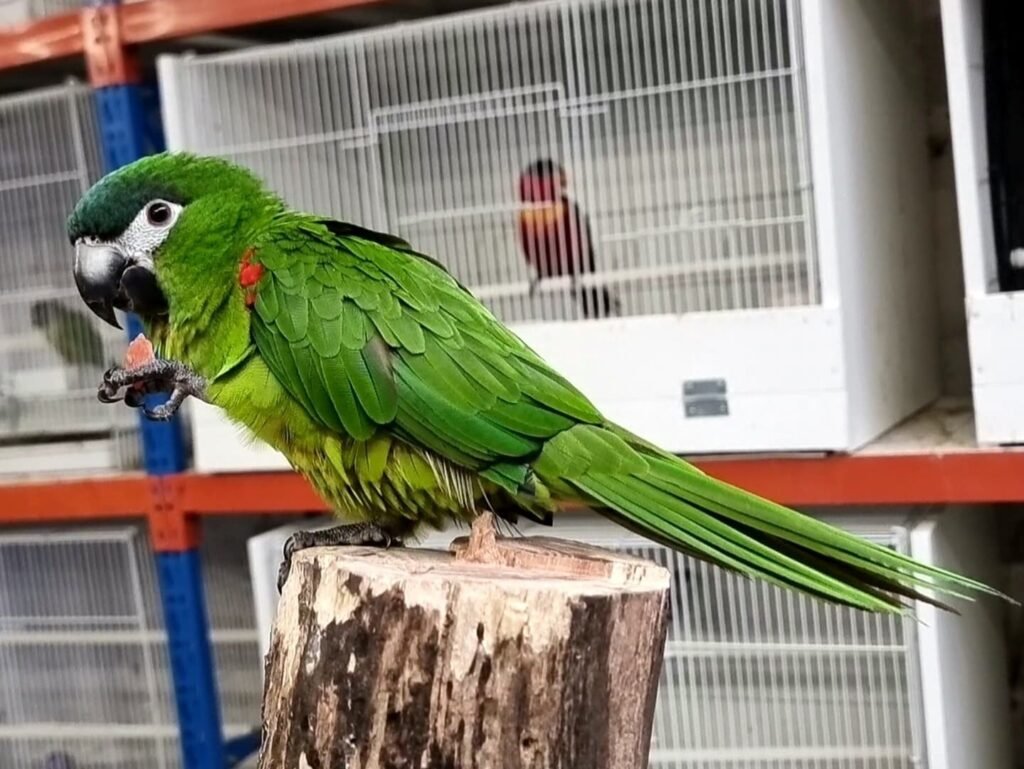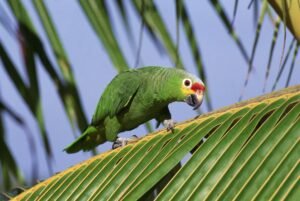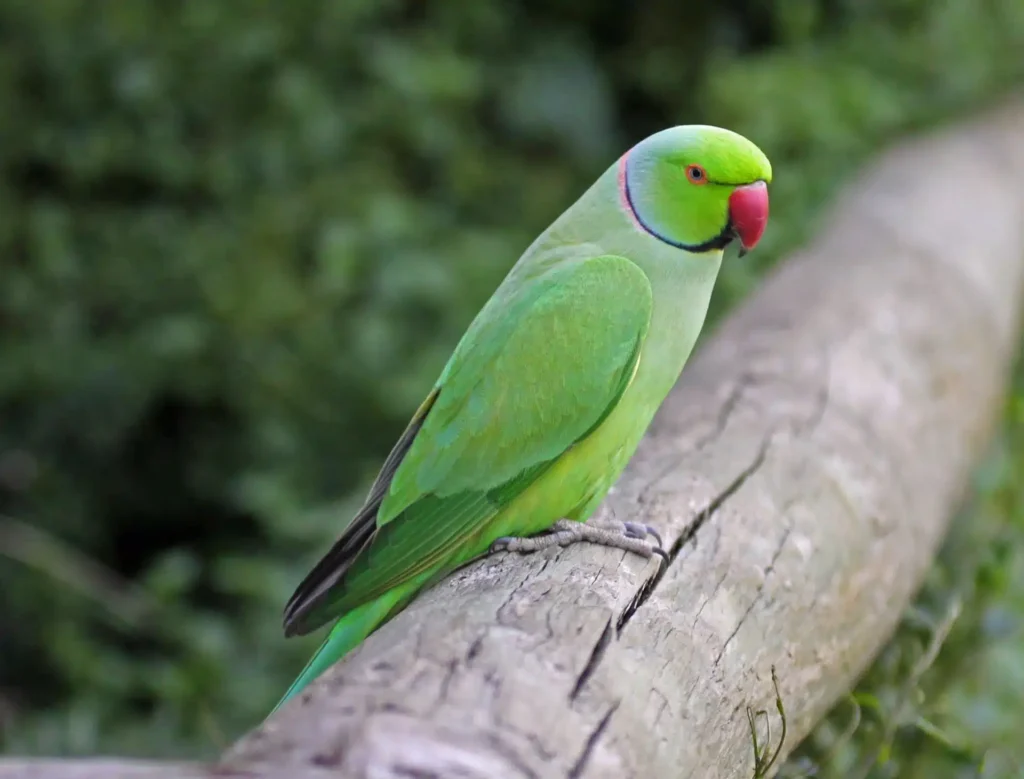Discover the Vibrant Charm of Hahn’s Macaw
Introduction:
Hahn’s Macaw (Diopsittaca nobilis nobilis), also known as the Red-Shouldered Macaw, is the smallest of the macaw species but makes a significant impact with its vibrant personality and striking appearance. Native to the forests of northern South America, these birds are cherished for their intelligence, playful nature, and strong bonds with their human companions. Hahn’s Macaws are an excellent choice for bird enthusiasts looking for a manageable yet dynamic parrot.
These macaws typically measure around 30 cm in length, with a predominantly green plumage accented by red and blue markings. Their expressive faces and curious demeanor make them a joy to observe and interact with. Despite their small size, Hahn’s Macaws are known for their loud, clear calls and ability to mimic human speech, making them lively and engaging pets.
In their natural habitat, Hahn’s Macaws live in flocks and are highly social, foraging for fruits, seeds, and vegetation. They thrive in captivity when provided with a stimulating environment, a balanced diet, and plenty of social interaction. With proper care, these delightful birds can live up to 30 years, offering long-term companionship and entertainment.

Facts:
| Fact | Details |
|---|---|
| Scientific Name | Diopsittaca nobilis nobilis |
| Common Names | Hahn’s Macaw, Red-Shouldered Macaw |
| Year Discovered | 1758 |
| Kingdom | Animalia |
| Phylum | Chordata |
| Subphylum | Vertebrata |
| Class | Aves |
| Order | Psittaciformes |
| Family | Psittacidae |
| Genus | Diopsittaca |
| Species | D. nobilis |
| Natural History | Native to northern South America, including Venezuela, the Guianas, Brazil, and Bolivia |
| Physical Information | Small-sized bird, around 30 cm in length, with green plumage and red and blue markings |
| Appearance | Bright green body, red patches on the shoulders, blue flight feathers, and a distinctive white eye ring |
| Scientists Names | Described by Carl Linnaeus in 1758 |
| Region | Northern South America |
Appearance:
Hahn’s Macaws are small parrots, typically measuring about 30 cm in length. They have a bright green body with red patches on their shoulders and blue flight feathers. Their faces are adorned with a distinctive white eye ring and a curved beak. Their vibrant plumage and expressive eyes make them visually striking and endearing.
Distribution:
Hahn’s Macaws are native to the tropical forests of northern South America, including regions in Venezuela, the Guianas, Brazil, and Bolivia. They inhabit a variety of environments, from lowland rainforests to savannas, where they forage for food and socialize in flocks.
Habits and Lifestyle:
In the wild, Hahn’s Macaws are highly social birds that live in flocks. They are known for their playful and inquisitive behavior, often seen engaging in acrobatics and vocalizations. Their diet consists mainly of fruits, seeds, and vegetation. As pets, they require regular social interaction, mental stimulation, and a variety of toys to keep them entertained.
Care Guide:
Caring for a Hahn’s Macaw involves providing a spacious cage with plenty of perches, toys, and enrichment activities. Their diet should include high-quality pellets, fresh fruits, vegetables, and occasional seeds. Fresh water should always be available. Regular social interaction and out-of-cage time are essential for their well-being.
Physical Characteristics:
Hahn’s Macaws have a compact, sturdy build with a strong, curved beak. Their plumage is predominantly green, with red patches on the shoulders and blue flight feathers. They have expressive eyes surrounded by white eye rings and a playful demeanor that endears them to bird enthusiasts.
Diet and Nutrition, Foods to Avoid:
In the wild, Hahn’s Macaws feed on a variety of fruits, seeds, and vegetation. In captivity, their diet should include a mix of high-quality parrot pellets, fresh fruits, and vegetables. Foods to avoid include chocolate, caffeine, alcohol, avocado, and any foods high in salt, sugar, or fat, as these can be toxic to birds.
Breeding and Business:
Breeding Hahn’s Macaws in captivity requires a suitable environment and a deep understanding of their needs. They typically lay 3-4 eggs per clutch, with an incubation period of about 24-26 days. Providing nesting boxes and a nutritious diet rich in calcium and protein is essential for successful breeding.
Behavior:
Hahn’s Macaws are known for their bold and curious behavior. They form strong bonds with their human caregivers and enjoy interactive play. These birds require regular mental stimulation, training, and social interaction to prevent boredom and behavioral issues. Despite their small size, they have a big personality and can be quite vocal.
FAQs:
| Question | Answer |
|---|---|
| How long do Hahn’s Macaws live? | Hahn’s Macaws can live up to 25-30 years in captivity. |
| What do Hahn’s Macaws eat? | Their diet includes high-quality pellets, fresh fruits, vegetables, and occasional seeds. |
| Where can I see Hahn’s Macaws? | They are native to northern South America and popular as pets worldwide. |
| Do Hahn’s Macaws talk? | Yes, they can mimic human speech and are known for their vocal abilities. |
| How do Hahn’s Macaws socialize? | They are social birds that enjoy interacting with their flock or human caregivers. |
Related Birds or Mate:
Related species include other small macaws such as the Noble Macaw and the Yellow-Collared Macaw, which share similar habitats and behaviors. Hahn’s Macaws are often compared to these species due to their playful nature and social behavior.
Type and Quality Prices:
| Type | Price Range |
|---|---|
| Pet Quality | $600 – $1,200 |
| Breeder Quality | $1,200 – $2,000 |
Factors Affecting Price:
Prices can be influenced by factors such as age, health, color mutations, and whether the bird is hand-raised or parent-raised. Geographical location and availability also play significant roles.
Price for the Bird in Different Regions and Countries:
| Region/Country | Price Range |
|---|---|
| United States | $600 – $2,000 |
| Europe | €500 – €1,800 |
| Australia | AUD 800 – AUD 2,500 |
| Asia | $700 – $2,200 |

References:
Categories: Companion Birds, Small Parrots, Colorful Birds, South American Birds, Social Birds, Seed-Eating Birds, Pet Birds, Playful Birds
Views: 1









